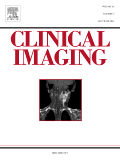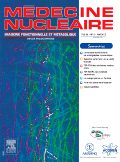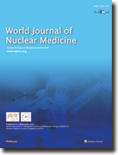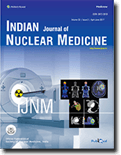
NUCLEAR MEDICINE REVIEW
Scope & Guideline
Unveiling Breakthroughs in Imaging Techniques
Introduction
Aims and Scopes
- Diagnostic Imaging Techniques:
The journal focuses on various imaging modalities, particularly PET/CT and SPECT, to enhance diagnostic accuracy in oncology, cardiology, and neurology. It explores the role of radiopharmaceuticals in diagnosing different cancers and other diseases. - Therapeutic Applications of Nuclear Medicine:
There is a strong emphasis on therapeutic strategies using radiopharmaceuticals, particularly in cancer treatment. The journal publishes studies on targeted therapies and the efficacy of various radionuclides in treating malignancies. - Clinical Case Studies and Registries:
The publication frequently includes clinical case studies and registries that provide insights into real-world applications of nuclear medicine. This approach helps to bridge the gap between theory and practice, showcasing the impact of nuclear techniques in patient management. - Emerging Technologies and Methodologies:
A consistent focus on novel technologies, such as deep learning enhancements for imaging, reflects the journal's commitment to integrating advanced methodologies into nuclear medicine practices. - Multidisciplinary Approaches:
The journal encourages interdisciplinary collaboration, highlighting the intersection of nuclear medicine with other medical fields, including oncology, cardiology, and neurology, thereby promoting a comprehensive understanding of patient care.
Trending and Emerging
- Precision Medicine and Personalized Radiopharmaceuticals:
There is an increasing focus on developing personalized radiopharmaceuticals tailored to individual patient profiles, underscoring the importance of precision medicine in nuclear therapy. - Artificial Intelligence in Imaging:
The integration of AI technologies, particularly in enhancing PET imaging quality and diagnostic accuracy, is a prominent trend. This reflects the growing interest in how machine learning can optimize nuclear medicine practices. - Use of Novel Radiopharmaceuticals:
The emergence of new radiopharmaceuticals, such as PSMA-targeted agents for prostate cancer, indicates a trend towards more targeted and effective imaging and treatment options in oncology. - COVID-19 Related Research:
Research related to the impact of COVID-19 on nuclear medicine practices, including incidental findings and adaptations in imaging protocols, has seen a significant rise, demonstrating the pandemic's influence on the medical field. - Multimodal Imaging Approaches:
There is an increasing trend towards combining different imaging modalities, such as PET/MRI and SPECT/CT, to improve diagnostic accuracy and provide comprehensive assessments of various conditions.
Declining or Waning
- Traditional Radioiodine Therapy:
There is a noticeable decrease in the publication of studies solely focused on traditional radioiodine therapy for thyroid conditions. The trend towards more innovative and targeted therapies may have overshadowed this conventional approach. - Basic Research in Radiopharmaceutical Chemistry:
Papers that delve into fundamental research on radiopharmaceutical chemistry have become less frequent, indicating a possible shift towards clinically oriented studies and applications rather than foundational research. - General Nuclear Medicine Practices:
As the field becomes more specialized, general discussions on nuclear medicine practices are waning. More specific topics are receiving attention, leading to a decline in broader reviews or overviews that do not focus on particular diseases or technologies. - Non-Oncological Applications of Nuclear Medicine:
The declining number of publications on non-oncological applications, such as those in cardiology unrelated to cancer, suggests a narrowing focus on oncology-related studies, reflecting the growing importance of cancer diagnostics and therapies.
Similar Journals

RADIOLOGIA
Innovating radiological practices for a healthier tomorrow.RADIOLOGIA is a distinguished journal in the field of Radiology, Nuclear Medicine, and Imaging, published by Elsevier España. With a rich history since its inception in 1961, this journal serves as a vital resource for professionals, researchers, and students interested in the latest developments and innovations in radiological practices. Although it is currently categorized in the Q3 quartile, its contributions continue to shape and advance clinical practices and research in radiology. RADIOLOGIA provides a platform for scholarly articles, reviews, and case studies that underpin the complexities of imaging techniques and nuclear medicine, while also addressing emerging trends and technologies. The journal is indexed with the ISSN 0033-8338 and E-ISSN 1578-178X, reflecting its accessibility to a global audience dedicated to enhancing patient care through advanced imaging methodologies. Readers can find the journal published in Spain and benefit from its commitment to disseminating pertinent research across diverse aspects of radiology.

Hellenic Journal of Nuclear Medicine
Unveiling Insights in Nuclear Medicine and RadiologyThe Hellenic Journal of Nuclear Medicine, published by the Hellenic Society of Nuclear Medicine, serves as a pivotal platform for researchers, professionals, and students in the fields of nuclear medicine, radiology, and imaging. Based in Greece and established as a prominent forum since 2004, this journal is dedicated to advancing the understanding and application of nuclear medicine through high-quality original research, reviews, and clinical studies. With an ISSN of 1108-1430 and an E-ISSN of 1790-5427, it has garnered attention within its community, holding a Q3 ranking in the 2023 category of Medicine (miscellaneous) and Radiology, Nuclear Medicine, and Imaging. Despite its current Scopus ranking of #235/333 in the respective fields, the journal is increasingly recognized for its potential to contribute impactful knowledge and innovations. Researchers are encouraged to utilize its resources to enhance their work and contribute to the growing body of knowledge in nuclear medicine. Notably, the journal maintains a commitment to accessible scholarly communication, fostering collaboration among experts across the globe.

Egyptian Journal of Radiology and Nuclear Medicine
Unlocking the Future of Imaging and TherapyThe Egyptian Journal of Radiology and Nuclear Medicine, published by Springer, is a premier open access journal that has provided valuable insights and advancements in the fields of radiology and nuclear medicine since its initiation in 2010. With an E-ISSN of 2090-4762, this journal is dedicated to bridging the gap between research and clinical practice, allowing for the dissemination of high-quality research to a global audience. Situated in Germany, it enjoys a robust reputation in the academic community, evidenced by its categorization in the Q3 quartile for 2023, as well as its Scopus ranking, where it holds a position of #225 out of 333 in the domain of Radiology, Nuclear Medicine and Imaging, placing it in the 32nd percentile. The journal's open access model ensures that researchers, professionals, and students can freely access innovative studies, reviews, and case reports that discuss the latest methodologies, technological advancements, and clinical outcomes in radiology and nuclear medicine. As it looks toward its converged years spanning from 2010 to 2024, the Egyptian Journal of Radiology and Nuclear Medicine continues to be an essential resource for advancing knowledge and fostering ongoing collaboration in these critical fields.

Clinical Imaging
Empowering Insights in Nuclear Medicine and ImagingClinical Imaging, published by Elsevier Science Inc, is a renowned journal dedicated to the field of radiology, nuclear medicine, and imaging. With an ISSN of 0899-7071 and an E-ISSN of 1873-4499, this esteemed publication has established its significance in advancing imaging science since its inception in 1989 and continues to make impactful contributions to the discipline through 2024. The journal holds a prestigious Q2 ranking in the category of Radiology, Nuclear Medicine, and Imaging, reflecting its critical role in bridging research and clinical practice. Currently ranked #113 out of 333 by Scopus, with a notable 66th percentile, it offers a platform for disseminating high-quality research, reviews, and case studies that inspire innovation and enhance imaging techniques. Although it primarily functions as a subscription-based journal, it remains dedicated to accessibility and the dissemination of pivotal findings that inform both academia and clinical settings. Clinical Imaging is essential for researchers, professionals, and students alike, offering insights that shape the future of diagnostic imaging.

Medecine Nucleaire-Imagerie Fonctionnelle et Metabolique
Harnessing Insights in Radiological Technology.Medicine Nucleaire-Imagerie Fonctionnelle et Metabolique is a prominent journal published by Elsevier France-Editions Scientifiques Medicales Elsevier, dedicated to the specialized fields of nuclear medicine and functional imaging. With an ISSN of 0928-1258 and an E-ISSN of 1878-6820, this esteemed publication has been a crucial platform for the dissemination of research and developments in the discipline since its inception in 1993. Covering a wide array of topics within biophysics, radiological and ultrasound technology, and radiology, the journal currently holds a Q4 category ranking in these fields, reflecting its significance within the academic community. Although there are currently no open access options available for readers, the journal caters to a niche audience of researchers, professionals, and students who seek to enhance their understanding of metabolic imaging and its applications. The 2023 Scopus ranks indicate its position as an emerging source of knowledge in a competitive landscape, making it an important resource for the latest studies and innovations in nuclear medicine.

Journal of Radiology Case Reports
Exploring the Frontiers of Radiology Through Groundbreaking Case ReportsThe Journal of Radiology Case Reports is a pioneering open-access journal dedicated to the publication of original case reports in the field of radiology, providing a crucial platform for the dissemination of valuable clinical insights and advancements in diagnostic imaging. Published by EDURAD since 2008, this journal aims to bridge the gap between clinical practice and ongoing research by showcasing unique cases that can enhance diagnostic accuracy and patient care. With an ISSN of 1943-0922, the journal is committed to excellence, evidenced by its current ranking in the Scopus database, where it stands at position #253 among 333 titles in the field, corresponding to a 24th percentile. The journal is indexed in notable databases and features an HIndex reflective of its ongoing contribution to medical literature. Researchers, professionals, and students can access insightful articles covering diverse case scenarios, thus enriching their knowledge of medical laboratory technology and enhancing their expertise in radiology, nuclear medicine, and imaging. The journal not only provides a wide reach through its open access model but also encourages collaborative research efforts, fostering the rapid circulation of case-based knowledge essential to the evolving landscape of radiological science.

World Journal of Nuclear Medicine
Fostering Collaboration in the Nuclear Medicine CommunityWorld Journal of Nuclear Medicine, published by THIEME MEDICAL PUBL INC, is a premier peer-reviewed journal dedicated to advancing the field of nuclear medicine. With an Open Access model established since 2011, this journal ensures that high-quality research is accessible to a wide audience, fostering knowledge sharing and collaboration among researchers, clinicians, and students alike. The journal aims to publish innovative studies, reviews, and clinical trials that contribute significantly to both the theoretical and practical aspects of nuclear medicine, enhancing diagnostic and therapeutic techniques within this critical area of healthcare. As the journal continues to grow in visibility and impact, it remains an essential resource for those seeking to stay at the forefront of advancements in nuclear medicine.

Indian Journal of Nuclear Medicine
Pioneering the Future of Nuclear ImagingIndian Journal of Nuclear Medicine, published by Wolters Kluwer Medknow Publications, serves as a crucial platform for advancing knowledge and research in the field of nuclear medicine, a specialized domain crucial for diagnostic imaging and therapy. With an ISSN of 0972-3919 and an E-ISSN of 0974-0244, this esteemed journal has been a trusted source of information from 2010 to 2024. Situated in Mumbai, India, it caters to researchers and professionals with an interest in the interplay between radiology and innovative nuclear imaging techniques. Although classified as Q4 in Radiology, Nuclear Medicine, and Imaging in 2023, the journal actively contributes to the dialogue surrounding emerging technologies, clinical practices, and challenges in nuclear medicine, making it a significant addition to the academic discourse. While currently not categorized as Open Access, readers can benefit from the wealth of peer-reviewed articles that shape the future of nuclear medicine and its applications. As the impact factor and specific H-index details are not listed, the journal's potential for future growth and increased visibility in the academic community remains promising, positioning it as a commendable resource for students, researchers, and healthcare professionals dedicated to the advancement of medical imaging and therapy.

EUROPEAN RADIOLOGY
Illuminating the Path to Radiological AdvancementEUROPEAN RADIOLOGY, published by SPRINGER, stands as a prestigious international journal in the field of radiology, nuclear medicine, and imaging, with an impressive impact factor that underscores its significance among peers. With an ISSN of 0938-7994 and an E-ISSN of 1432-1084, this journal provides a platform for cutting-edge research and advancements in medical imaging from 1991 to 2024. Recognized as a Q1 journal in both general Medicine and the specialized Radiology category by 2023, EUROPEAN RADIOLOGY ranks an impressive #17 out of 333 in its field according to Scopus, placing it in the 95th percentile. While it does not currently offer Open Access options, the journal remains essential reading for researchers, professionals, and students striving to stay at the forefront of developments in diagnostic imaging and related technologies. By contributing to a comprehensive understanding of radiological practices, EUROPEAN RADIOLOGY plays a crucial role in shaping the future of medical diagnosis and patient care.

QUARTERLY JOURNAL OF NUCLEAR MEDICINE AND MOLECULAR IMAGING
Pioneering Insights into the Future of Medical Imaging.The Quarterly Journal of Nuclear Medicine and Molecular Imaging, published by Edizioni Minerva Medica in Italy, serves as a pivotal platform for researchers and practitioners in the fields of Nuclear Medicine and Molecular Imaging. With an ISSN of 1824-4785 and an E-ISSN of 1827-1936, this journal boasts a respectable impact factor and is positioned in the Q3 quartile of the Radiology, Nuclear Medicine and Imaging category, based on the latest 2023 evaluations. As the journal continues to converge from its inception in 2004 to its anticipated expansions through 2024, it aims to disseminate high-quality, peer-reviewed articles that advance the frontier of imaging technologies and their applications in clinical practice. Researchers, professionals, and students are encouraged to contribute to its diverse scope, which encompasses innovative research, clinical findings, and reviews that encapsulate cutting-edge advancements in the field, highlighting its importance as an essential resource for knowledge and collaboration.